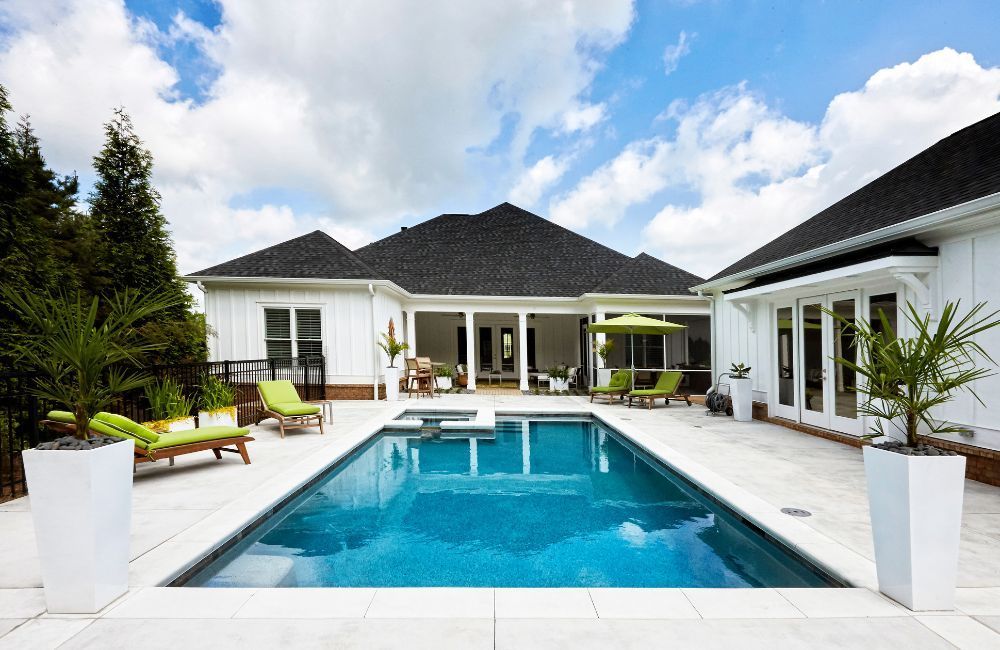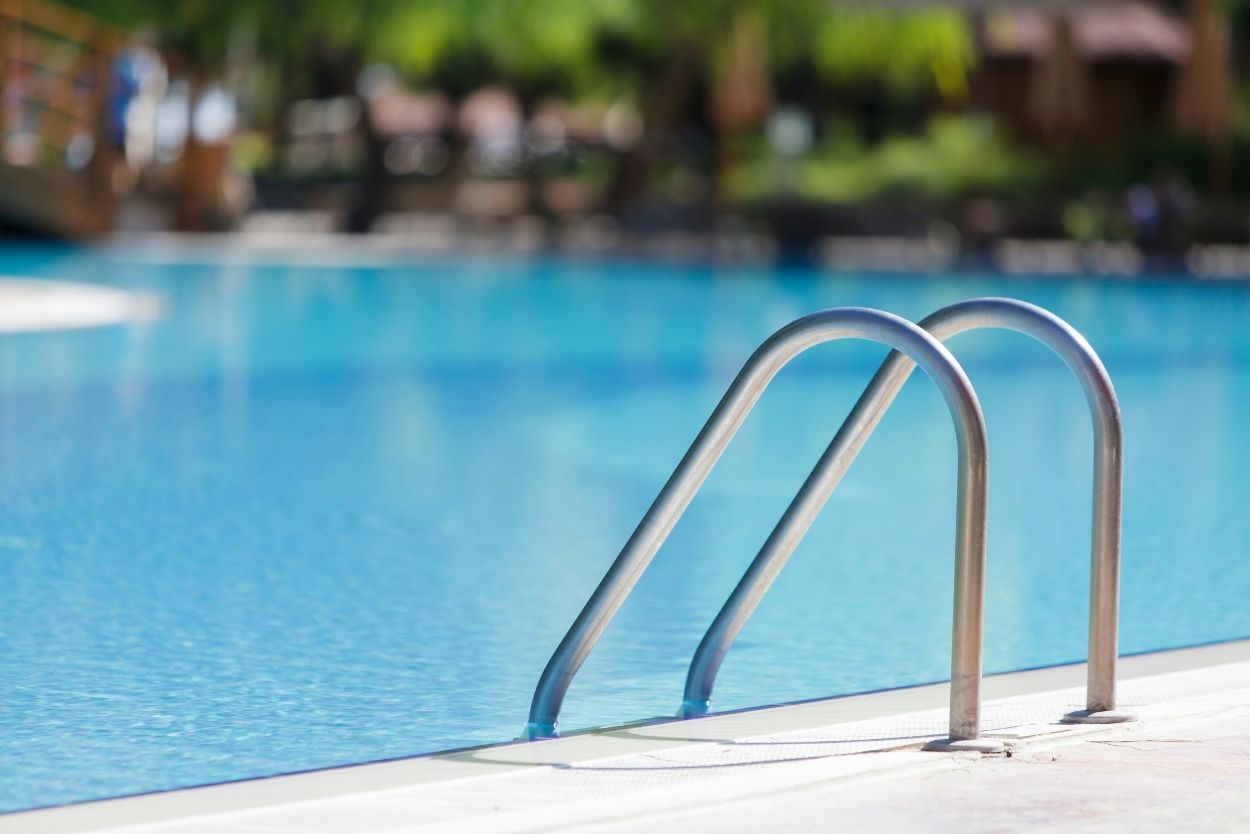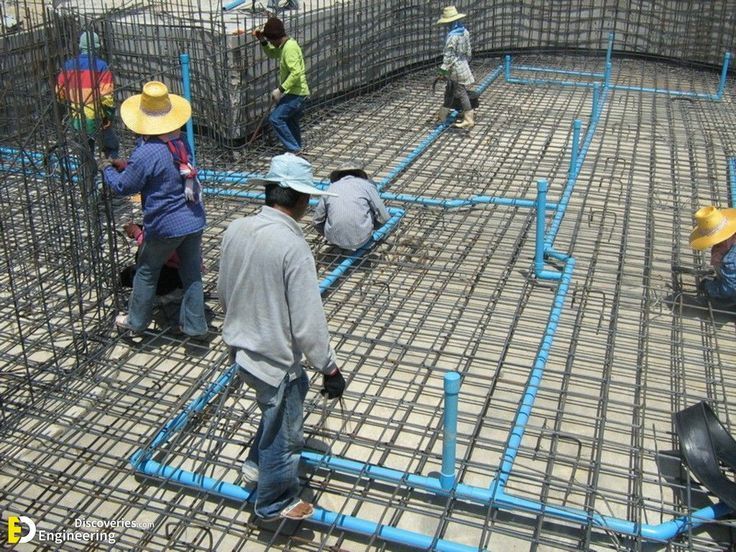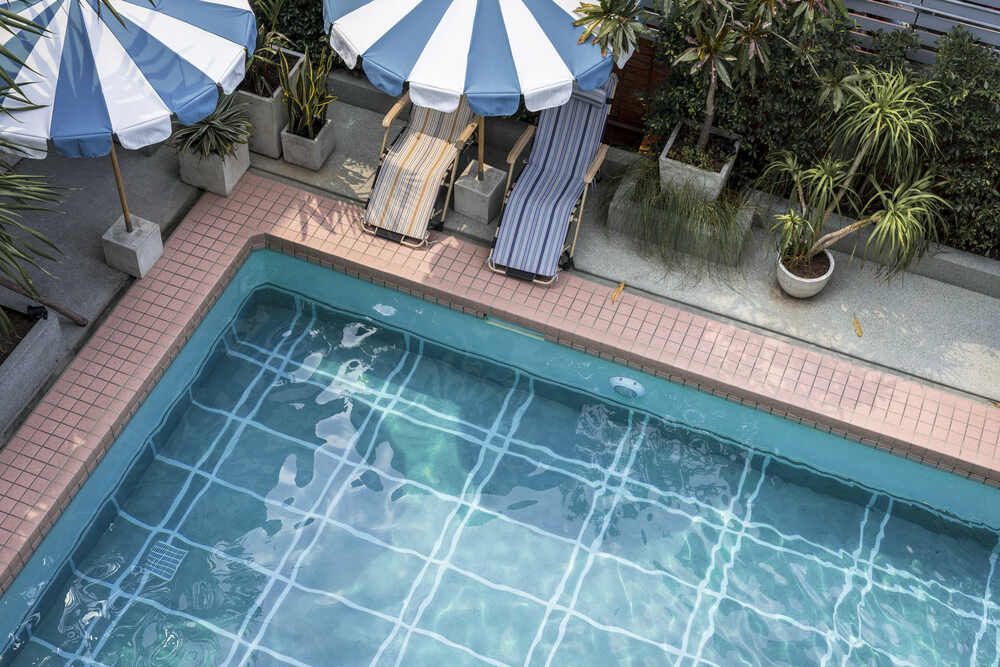6 Ways Pool Designers Can Optimize Your Pool for Year-Round Use

Year-round pool enjoyment is becoming increasingly popular, as homeowners seek ways to maximize the use of their outdoor spaces in all seasons. Fortunately, professional pool designers can transform standard pools into versatile, all-weather retreats. By implementing smart design choices, heating solutions, and protective features, pool designers ensure that a pool remains functional and enjoyable throughout the year, no matter the weather.
Here are six effective ways pool designers in Danbury, CT, can optimize a pool for use during every season.
Table of Contents
Key Takeaways
1. Heating Solutions for Cold Weather
2. Pool Covers for Insulation and Safety
3. Proper Lighting for Night and Low-Light Conditions
4. Windbreaks and Pool Enclosures for Weather Protection
5. Smart Pool Technology for Efficient Operation
6. Pool Design for Versatile Use in All Seasons
How to Choose the Right Pool Designers
Frequently Asked Questions (FAQs)
Trust Professional Pool Designers in Danbury, CT!
Key Takeaways
✔ Pool designers play a key role in optimizing pools for year-round use through strategic design and feature integration.
✔ Effective heating solutions allow pools to be used even in colder months, extending the swim season.
✔ Pool covers enhance safety, conserve heat, and reduce maintenance, making them essential for all-season pool use.
✔ Proper lighting ensures safe and enjoyable pool use during night and low-light conditions.
✔ Windbreaks and enclosures protect pools from harsh weather, improving comfort and extending usability.
✔ Smart pool technology simplifies maintenance and improves energy efficiency, making pools easier to manage year-round.
✔ Versatile pool designs accommodate different activities, allowing for year-round enjoyment regardless of weather conditions.
1. Heating Solutions for Cold Weather
One of the most effective ways to optimize a pool for year-round use is by incorporating heating solutions. Pool designers can select the right heating systems to ensure the pool remains comfortable, even during colder months.
How Pool Designers Select the Best Heating Options
- Energy-Efficient Heat Pumps: Heat pumps are a cost-effective solution for maintaining comfortable water temperatures throughout the year. Pool designers often recommend heat pumps for their ability to transfer heat from the air, which reduces energy consumption while keeping the pool warm.
- Gas Heaters for Rapid Heating: Gas heaters are ideal for quick temperature adjustments, making them perfect for colder weather. Pool designers often suggest gas heaters for pools that need to be heated rapidly, ensuring that swimmers don’t have to wait long to enjoy a warm pool.
- Solar Heating for Eco-Friendly Options: Solar heating systems use the sun's energy to warm the pool, providing an environmentally friendly option. Pool designers integrate solar panels into the pool setup to capture natural energy, allowing for consistent warmth without high energy costs.
Why Heating Extends Pool Use in Cooler Seasons
- Comfortable Water Temperatures: By maintaining a pleasant water temperature, pool designers ensure that the pool can be used even in chilly weather. Consistent warmth keeps the pool inviting all year round.
- Energy and Cost Efficiency: Pool designers focus on heating solutions that provide warmth while keeping energy costs low. Efficient systems allow pool owners to enjoy their pool without worrying about high utility bills.
- Extended Swim Seasons: With the right heating, the swim season extends well beyond the summer months. Pool designers optimize pools to remain functional in fall and winter, increasing the pool's overall value and enjoyment.

2. Pool Covers for Insulation and Safety
Using the right pool cover can significantly improve a pool’s functionality in all seasons. Pool designers recommend high-quality covers that not only keep the pool clean but also help maintain water temperature and enhance safety. These covers are essential for both energy savings and protecting the pool during off-seasons.
How Pool Designers Choose the Best Pool Covers
- Thermal Covers for Heat Retention: Thermal covers are designed to trap heat, reducing the amount of energy needed to warm the pool. Pool designers suggest thermal covers for colder climates, as they help maintain a consistent temperature when the pool is not in use.
- Safety Covers for Protection: Safety covers provide peace of mind by preventing accidents, especially in households with children or pets. Pool designers often recommend these covers to ensure that the pool area is secure year-round.
- Automatic Covers for Ease of Use: Automatic pool covers offer convenience by allowing easy covering and uncovering of the pool. Pool designers can install automatic covers to simplify pool maintenance and ensure that the pool is protected without added hassle.
Why Pool Covers Improve Year-Round Usability
- Temperature Conservation: Pool covers help retain heat, which reduces the need for constant reheating. Pool designers include this feature to ensure the pool remains energy-efficient, especially during cooler months.
- Reduced Cleaning Time: Covers prevent debris from entering the pool, reducing the frequency of cleaning. Pool designers prioritize covers that help minimize maintenance to make the pool more enjoyable all year.
3. Proper Lighting for Night and Low-Light Conditions
Lighting extends the pool use into the evening or during the shorter daylight hours of winter. Pool designers use a variety of lighting options to enhance both the functionality and aesthetic appeal of the pool. Good lighting also improves safety while creating a visually striking environment for nighttime use.
How Pool Designers Enhance Pool Usability with Lighting
- Energy-Efficient LED Lighting: LED lighting is a popular choice due to its energy efficiency and bright illumination. Pool designers often recommend LED lights because they use less power while providing clear visibility, which makes nighttime swimming more enjoyable.
- Underwater Lights for Added Ambiance: Underwater lights not only enhance safety but also create a unique and inviting atmosphere. Pool designers install these lights to make the pool visually appealing, encouraging use even after dark.
- Surrounding Area Lighting for Safety: Proper lighting around the pool area, such as pathway lights, ensures safe movement. Pool designers focus on enhancing safety by placing lights in key areas to prevent accidents during low-light conditions.
Why Lighting is Important for Year-Round Pool Use
- Extended Usable Hours: With proper lighting, the pool can be used long after the sun sets, making it accessible for evening swims. Pool designers extend pool hours by incorporating lights that make the area safe and welcoming.
- Enhanced Visibility and Safety: Good lighting ensures that swimmers can see clearly, reducing the risk of accidents. Pool designers prioritize safety by installing bright, reliable lighting throughout the pool area.
4. Windbreaks and Pool Enclosures for Weather Protection
Weather can significantly impact pool usability, especially during cooler or windier months. Pool designers implement windbreaks and enclosures to protect the pool from harsh elements. These features also improve privacy and create a more controlled environment around the pool.
How Pool Designers Use Windbreaks to Improve Pool Comfort
- Natural Windbreaks with Landscaping: Trees, shrubs, and other landscaping elements can serve as natural windbreaks. Pool designers often incorporate these features to provide shelter from the wind while enhancing the pool's aesthetic appeal.
- Fencing for Wind and Privacy: A well-placed fence can block cold winds and create a private space around the pool. Pool designers suggest fencing options that not only protect the pool from wind but also provide a sense of seclusion. Proper fencing and barriers are crucial to prevent unauthorized access, especially for children ages 1 to 4, who have the highest drowning rates globally.
- Strategic Placement of Pool Equipment: Positioning pool equipment in protected areas helps it function efficiently. Pool designers ensure that heaters and filters are placed in wind-sheltered locations to improve their performance during the colder months.
Why Enclosures Make Pools Usable Year-Round
- Protection from Rain and Cold: Enclosures create a barrier against the elements, keeping the pool warm and usable in rain or cold weather. Pool designers typically incorporate custom enclosures to extend the pool’s usability into winter.
- Better Temperature Regulation: Enclosures trap heat, allowing the pool area to stay warmer even when outdoor temperatures drop. Pool designers use this technique to optimize temperature control for consistent comfort.
- Enhanced Privacy: Enclosures also offer privacy, transforming the pool into a secluded retreat. Pool designers recognize the importance of privacy in creating a comfortable, year-round pool environment.

5. Smart Pool Technology for Efficient Operation
Integrating smart technology into pool designs makes maintaining a pool easier and more efficient. Pool designers implement smart systems that automate functions like heating, cleaning, and monitoring, making pools simpler to manage.
How Pool Designers Use Smart Technology to Improve Pool Functionality
- Automated Heating and Temperature Control: Smart heating systems can be controlled remotely to ensure that the pool is always at the desired temperature. Pool designers recommend smart systems that allow users to adjust settings from anywhere, providing flexibility for year-round use.
- Self-Cleaning Systems for Low Maintenance: Smart cleaning systems automatically handle debris removal and chemical balancing, reducing overall pool maintenance. Pool designers usually incorporate these systems to simplify pool care and ensure the pool remains clean with little effort.
- Remote Monitoring for Pool Equipment: Smart technology can monitor the performance of pumps, filters, and heaters, alerting pool owners when maintenance is needed.
Why Smart Technology is Key for Year-Round Pool Management
- Convenient Remote Control: Smart systems allow users to control the pool’s functions remotely, making it easier to manage the pool during off-seasons. Pool designers offer these solutions for convenient, year-round control anywhere, any time.
- Improved Energy Efficiency: Smart systems monitor energy usage, which can help reduce operational costs. Pool designers focus on integrating energy-saving technology that keeps the pool running efficiently throughout the year.
- Reduced Maintenance Efforts: Automated systems take care of routine tasks, making pool maintenance less burdensome. Pool designers emphasize the convenience of smart technology to keep pools operational with minimal manual effort.
6. Pool Design for Versatile Use in All Seasons
A well-designed pool can serve multiple purposes, allowing for enjoyment in all seasons. Pool designers craft layouts that accommodate various activities, ensuring the pool remains functional and appealing year-round. From summer lounging to winter soaking, a versatile pool design maximizes enjoyment across different weather conditions.
How Pool Designers Create Flexible Pool Layouts
- Incorporating Hot Tubs or Spas: Adding a hot tub or spa extends pool use into colder months, as they provide a warm space to relax. Pool designers often integrate hot tubs as part of the overall pool design to offer year-round enjoyment.
- Shallow Ledges for Summer Lounging: Tanning ledges or shallow areas are perfect for lounging during warmer months. Pool designers create these spaces for sunbathing and relaxation, making the pool more versatile for different seasons.
- Swim Jets for Exercise: Swim jets create a current for exercise, allowing swimmers to get a workout even in a compact pool. Pool designers include these features to make the pool functional for fitness enthusiasts.
Why Versatile Design is Important for Year-Round Use
- Accommodating Multiple Activities: A well-designed pool can serve various purposes, from relaxation to exercise. Pool designers ensure the layout allows for different uses, making the pool adaptable to seasonal changes.
- Appealing in All Weather Conditions: Whether it's hot summer days or cool winter evenings, versatile designs keep the pool inviting. Pool designers create spaces that remain functional and enjoyable in any climate.
- Increased Property Value: Pools designed for year-round use are seen as more valuable assets. Pool designers focus on creating functional, adaptable pools that increase both enjoyment and property value.
How to Choose the Right Pool Designers
An inground pool installation can enhance a home’s value and outdoor living, reflected by the swimming pool construction industry's $12.2 billion revenue in 2023. As such, selecting the right pool designers is essential for creating a functional and beautiful pool that can be enjoyed year-round. Here are five key factors to consider when choosing pool designers in Danbury, CT:
1. Look for Proven Experience
Experienced pool designers have a track record of successful projects that showcase their skills. Reviewing their portfolio gives insight into the types of pools they have designed and their approach to creating unique spaces. Working with experienced professionals ensures the pool will be designed with expertise and precision.
2. Prioritize Custom Design Solutions
Every property is unique, so it’s important to choose pool designers who offer custom solutions rather than cookie-cutter designs. A personalized design ensures the pool integrates seamlessly with the landscape and caters to specific requirements. Pool designers focused on customization will deliver a pool that reflects both style and functionality.
3. Evaluate Communication and Collaboration
Effective communication is key to a smooth design and construction process. Pool designers who listen carefully, provide clear updates, and encourage collaboration create a better working relationship. Good communication ensures the pool design aligns with expectations and minimizes potential issues during the project.
4. Consider Knowledge of Latest Trends and Technology
The best pool designers stay updated on the latest industry trends and innovations, including smart technology, energy-efficient systems, and modern design elements. Their expertise in these areas helps ensure the pool is both stylish and functional. Working with designers who understand current trends will result in a pool that is both timeless and innovative.
5. Look for Strong Client Reviews and Recommendations
Client feedback provides valuable insight into the reliability and quality of pool designers. Positive reviews and recommendations indicate a designer’s ability to meet deadlines, stay within budget, and deliver high-quality results. Checking for strong reviews helps ensure the pool designers have a reputation for excellence and professionalism.
Frequently Asked Questions (FAQs)
How long does the pool design and construction process take?
The timeline for designing and building a pool can vary depending on the complexity of the design and the project’s scope. On average, it can take anywhere from three to six months, including the design phase, obtaining permits, and actual construction. Weather conditions and site-specific challenges can also affect the timeline. Working closely with pool designers helps ensure the process stays on track and meets the projected schedule.
What types of materials are typically used for pool construction?
Pool designers often use materials like concrete, fiberglass, and vinyl to construct pools, each with its own advantages. Concrete offers the most flexibility in design and is highly durable, though it requires more maintenance. Fiberglass pools are quick to install and have a smooth surface that resists algae growth, while vinyl liners are cost-effective but may need replacement after several years. Pool designers select materials based on budget, design preferences, and long-term durability.
What should be considered when designing the pool’s surrounding landscape?
The landscape surrounding the pool should complement the overall design while providing functionality and aesthetic appeal. Pool designers often consider factors such as privacy, safety, and ease of access when planning the layout. Adding elements like plants, decking, and outdoor seating enhances the pool area and creates a welcoming environment.
How often does a pool need to be maintained?
Pool maintenance frequency depends on factors like pool size, location, and the features installed. Generally, a pool requires weekly maintenance, including cleaning, chemical balancing, and equipment checks. Some pool designers incorporate smart technology, like automated cleaning systems, to reduce the need for manual upkeep. Regular maintenance ensures that the pool remains safe, clean, and fully functional throughout the year.

New Paragraph
Our Info
Monday to Friday from 7 am to 6 pm
Saturdays from 8 am to 5 pm
We Accept Cash and Checks
LOCATION
We Cover 80 Miles around Bethel,
Danbury, and Brookfield
Bethel, Connecticut 06801
Danbury, Connecticut 06810
Brookfield, Connecticut 06804
Navigation
Copyright FJV Construction, All Rights Reserved



